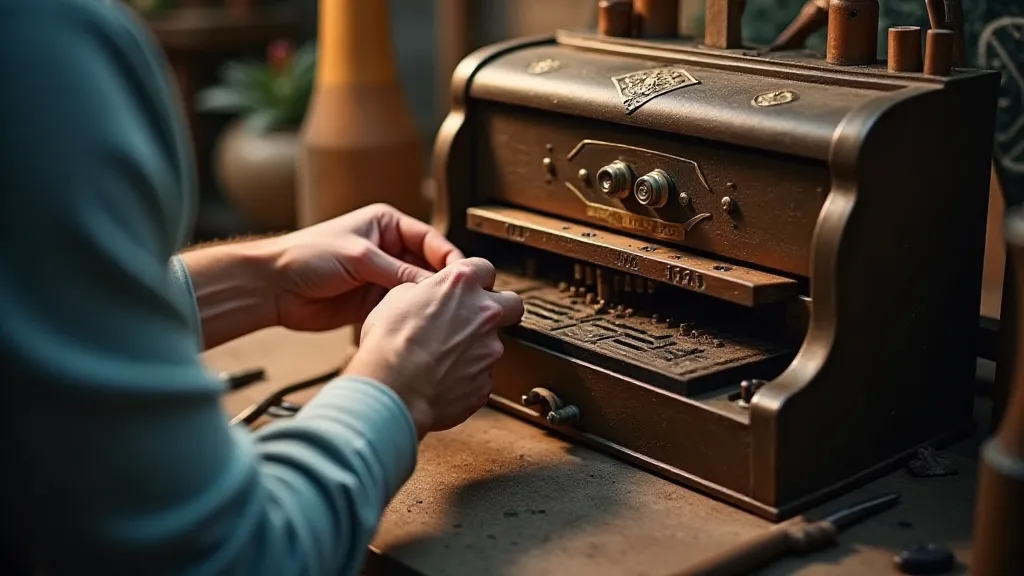The Storyteller’s Compass: Finding Your Authentic Voice
There's a particular scent that clings to old things—a faint, earthy aroma of time, dust, and forgotten memories. For me, that scent is inextricably linked to antique accordions. I inherited one from my grandfather, a taciturn man of few words, but whose stories, whispered into the bellows of that instrument, resonated with a depth that dwarfed any spoken phrase. It wasn’t the music itself that held the magic, though the waltzes and polkas he’s played were lovely, but the feeling of connection to him, to a history I barely understood, and the sense of something enduring and beautifully crafted.
Holding that accordion, feeling the weight of the wood, tracing the intricate carvings – it's a tactile reminder that creation, in any form, is rarely a solitary endeavor. The instrument’s design, its mechanism, the very act of its existence, speaks to centuries of evolution, of countless hands shaping and refining, all contributing to a singular object. And so it is with writing. Our voices, our stories, are rarely entirely our own. They are formed by influences, experiences, and the echoes of those who came before us. Finding our "authentic voice" isn't about inventing something entirely new, it's about understanding the influences that shaped us and then, consciously, choosing which ones to amplify and which to leave behind.

The Echoes Within: Identifying Your Influences
Consider, for a moment, the act of restoring an old accordion. It's a delicate process, requiring patience, knowledge, and a deep respect for the original craftsmanship. You’re not trying to make it new; you’re striving to reveal its inherent beauty, to preserve its history. Similarly, in writing, recognizing our influences isn't about dismissing them – it's about understanding their role in shaping our current voice. What authors moved you as a child? What genres consistently draw you back? What styles do you instinctively mimic? These are clues, breadcrumbs leading to the source of your initial passions.
My own writing, I’m only now realizing, is profoundly influenced by the lyrical prose of Gabriel García Márquez and the stark realism of Raymond Carver. Márquez’s ability to weave magical realism into the mundane, and Carver’s skill in capturing the quiet desperation of everyday life, have left an undeniable mark. I didn’t consciously choose to emulate them; it was a subconscious absorption, a gradual osmosis of style. The challenge, then, became recognizing those influences and moving beyond mere imitation. Sometimes, understanding the underlying emotional landscape that drives narrative, like a careful exploration of mapping emotional landscapes, can shed light on your own process.
Beyond Imitation: Experimentation and Discovery
The beauty of an antique accordion lies not just in its historical significance, but in the ingenuity of its construction. Each button, each reed, is precisely positioned to create a specific note, a particular sound. A slight misalignment, a broken spring – and the music falters. Finding your voice in writing is a similar process of refinement. You need to experiment, to push boundaries, to discover what works, and what doesn't.
Try writing in different genres. If you typically write short stories, try writing a poem. If you usually write in the third person, switch to the first. Borrow phrases from unexpected sources – a scientific paper, a cooking recipe, a song lyric. Force yourself to write in a style that feels uncomfortable, that stretches your abilities. The goal isn't to become someone else, but to uncover the hidden possibilities within yourself. Consider, too, the delicate balance of what's spoken and what remains unsaid – the power of chromatic silence in narrative. It's a crucial element in crafting compelling stories.
There’s a fascinating detail in antique accordion construction - the air button. This small, unassuming button controls the air pressure within the bellows, directly affecting the tone and volume of the music. It's a subtle adjustment, yet its impact is profound. In writing, these are the small choices we make – the word choice, the sentence structure, the rhythm of the prose – that ultimately shape the voice. Be conscious of these choices. Experiment with them. See how they affect the overall tone and feeling of your writing.
The Value of Craft: Patience and Perseverance
Restoring an accordion isn't a quick or easy task. It requires specialized tools, meticulous attention to detail, and a willingness to learn from mistakes. Similarly, developing a unique writing voice takes time, effort, and a good dose of self-compassion. There will be days when the words flow effortlessly, and days when you feel completely blocked. Don't get discouraged. Every writer faces those challenges.
The craftsmanship in an antique accordion often reveals so much about the era in which it was made. The type of wood used, the style of the carvings, the quality of the materials – all provide clues about the cultural and economic context of its creation. Similarly, our writing reflects the time in which we live, the experiences that shape us, and the perspectives we bring to the world. Embrace that. Don’t be afraid to be authentic, even if it means challenging conventions or expressing unpopular opinions. Often, the most potent stories emerge from exploring the unspoken emotions and motivations that drive our characters. It’s a process not unlike tending a garden, carefully nurturing the seeds of empathy and understanding – a skill beautifully explored in The Gardener of Unsent Letters: Cultivating Empathy Through Character.

Finding Resonance: Connecting with Your Readers
Ultimately, the true test of a writer's voice isn't its uniqueness, but its resonance. Does it connect with readers? Does it evoke emotion? Does it offer a fresh perspective on the world? Like a well-tuned accordion, a compelling voice produces music that moves the soul. It may not be perfect; it may have its quirks and imperfections, but it will be undeniably authentic.
Consider the materials used in an accordion's construction. The wood, the leather, the metal – each has its own distinct character, its own inherent beauty. And when these materials are combined with skill and artistry, they create something truly special. In writing, our experiences, our perspectives, our vulnerabilities – these are the raw materials that we shape into our unique voices. Don't be afraid to expose them, to share them with the world.
The final, lingering scent of an antique accordion is more than just the smell of age; it’s the scent of stories, of memories, of a connection to something larger than ourselves. Finding your voice in writing is a similar journey – a search for connection, for meaning, for a way to share your story with the world. Embrace the process, be patient with yourself, and trust that your voice, however imperfect, is worth sharing. While there's a beauty in crafting stories that stand alone, sometimes a writer needs a framework to truly realize their potential – a consideration often overlooked in the creative process, much like the practical steps involved in getting your work published. For those seeking guidance on navigating the publishing landscape, a thorough look at From Draft to Done: Essential Publishing Tips for Creative Writers can be invaluable.






